Belcarra Garden Club
BC, Canada
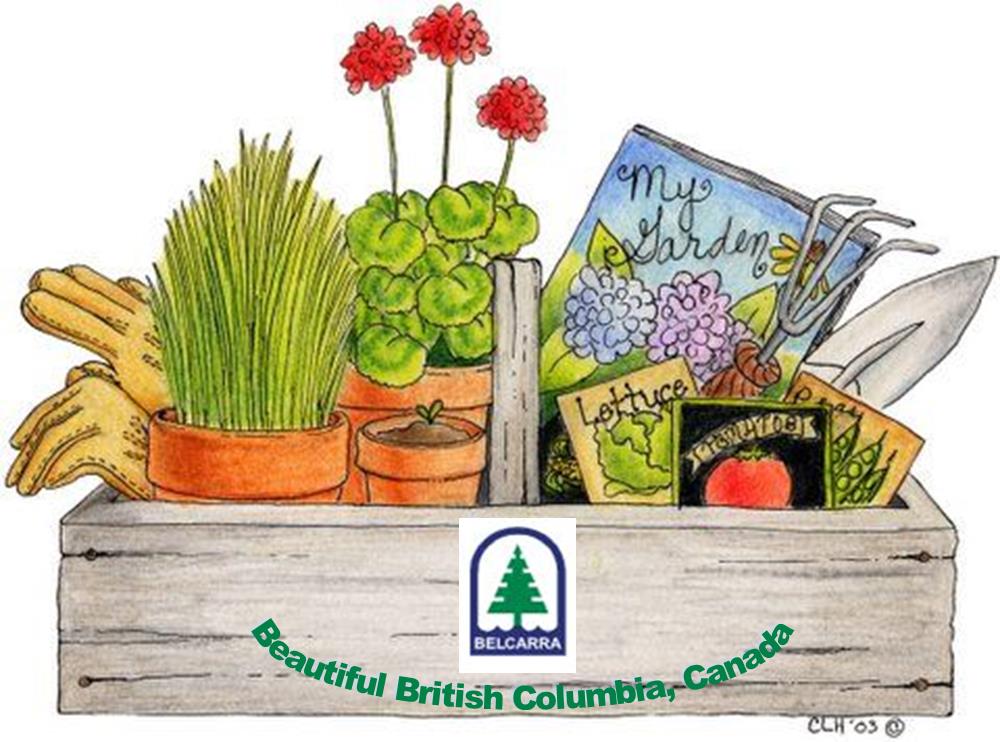
Soils and Compost
by Nora Boekhout
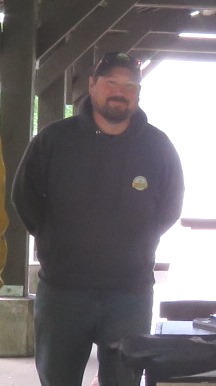 |
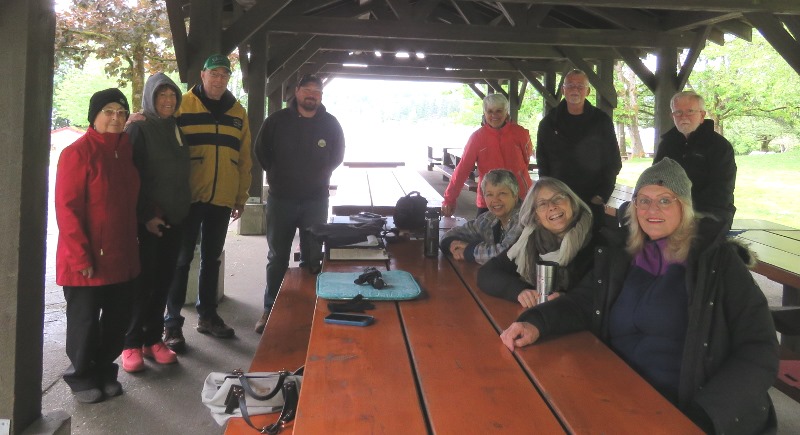 |
This month’s Belcarra Garden Club meeting featured a guest! Les was intrigued by the Artisan Garden display at the Home and Garden Show. Operations Manager Tom Ciprian kindly agreed to visit our little, rather chilly, BGC Belcarra park meeting to talk to us about soils and the company.
The Artisan Garden Group is the Beattie family business, which made its first entry into the business by landscaping Skytrain walkways. Steven and Ingrid were then invited to do the decorative landscaping for Expo 86! Sons Jordan and Kyle joined the growing company and then Ingrid opened her nursery as part of the business. They are now a leading provider of landscape products such as topsoil, vegetable blended soil, compost, mulch, gravel, and sand. Tom laughed when he said that he is the only Italian in this Scottish enterprise! Tom also divulged a background in broadcasting, a long way from his Soil Science courses later on!
Tom agreed that weather has been a real concern for planting so far this year. Temperatures went from cold to a hot spell and then landed right back in cold, wet conditions. What a confusing time for plants! A double whammy was that plants really suffer when we happen to overwater right before a cold snap!
Soil texture was the first topic on Tom’s discussion. Soils are commonly typed as sand, silt, or clay and we all agreed that clay and rocks are our main soil types here in Belcarra!
The clay in our soil needs to get some air, so Tom suggested that adding sand and limestone, and perhaps also a little peat, can be beneficial. Compost is powerful additive and what we may not have thought of is that it helps to decompose the soil below the surface as well. The billions of bacteria in organic matter, when you add leaves and clippings from the yard, bring down alkaline levels. Food scraps, on the other hand, have the opposite effect. If you need to raise the pH, use more green waste instead of vegetables.
“Till or no till” is a big buzz these days, as we have heard on our other field trips as well! Les recounted his experiences growing up on the farm, when all farmers tilled their fields. He recounted his more up-to-date horticulture lessons instructing him that “no till” results in an improvement in crops (slowly) and reduces costs. Tom agreed that it takes 3 years to see the benefit, so you have to be patient.
Our little group knew that “no till” is the right choice! Tom emphasized that the crust on “no till” soil is actually armour against weeds and microbial predators. It may look dry on top but it isn't dry underneath. The mycelium is working its magic under the soil!
Worms are also important to aeration so encourage them! Pesticides are risky as they destroy so many beneficial insects that help enrich the soil.
Treat your soil in the fall and winter. Leaves and branches are good to leave on top and then you only need a little manure. Straw is good for our climate but watch out that it doesn’t have seed heads! You will get lots of weeds! Yellow cut straw is good. It is a great insulator and is nutritious.
The topic then switched to gardening tips and suggestions. The question came up as to whether you need to rotate your vegetables each year. Tom told us that this is not necessary, in that the specific conditions are the biggest factor. If you have a good sunny spot then keep it! When transplanting, be sure to loosen the roots before planting.
Nitrogen levels are another area of concern to gardeners. If you are planting too closely together, it reduces the available nitrogen.
Les wondered if there were some special tips for growing spinach. Tom noted that good sun needed, to make sure soil is loose, and to keep the soil moist. Tom added that this veggie can be difficult whereas kale is the easiest to grow. It seems to like everything!
The new fad of growing tomatoes on their side was brought up. There wasn’t a clear answer here, but retaining moisture seems to be the point of this. Tom removes all low leaves on his tomato plants and gives compost and mulch around the base.
After garlic is harvested Tom grows radishes, radicchio, and other fast growing veggies. Swiss chard lasts well in cold weather. Bok Choy self-seeds well. Certain pairings are good and some are not. Les mentioned that beets, for example, don't like pole beans.
Fruit producing trees, such as apples and cherries, may not be as tasty in their first year of fruit. Overproduction is also not good, as the fruit may not be as tasty. Fig trees are hard to kill even when over pruned. They are easy to propagate. Cut the branch at an angle and then plant 2 nubs under the soil to get roots.
Powdery mildew is always a concern with growers. Les noted that maple trees seemed to be covered in it at the same time he has problems in his garden. Tom suggested that our area may be too humid, being near the water. Sometimes spraying with soapy water can help.
Tom recommended choosing black, composted mulch rather than the red bark mulch as a topper in our gardens. Red bark mulch can be a fire hazard and rather than adding to the soil’s nutrients, it can leach out the nitrogen. It is decorative but not that beneficial so is best suited around trees, shrubs, and boxwood. The black bark mulch has been aged over a year. Douglas fir is the best as it is nutritious and acts as armour against weeds coming up or growing on top. “Birds’ eye pea gravel” was mentioned and while okay, Tom added that it is not organic.
Tom encouraged us to visit The Artisan Garden. They are not a big depot but sell to both residential and commercial customers. Some of the products and services are seasonal… they range from landscaping supplies (soil, mulch, gravel), to firewood, to snow removal and salting in the winter! The plant nursery, "It's about Thyme", is located at the front of the property. It features premium perennials, shrubs, caliper and specimen trees.
We learned a lot from Tom’s friendly talk, and certainly want to check out the facility and the nursery in the future. Tom emphasized that we should feel free to call him personally if we think of any questions! Now that’s personalized customer service!
 |
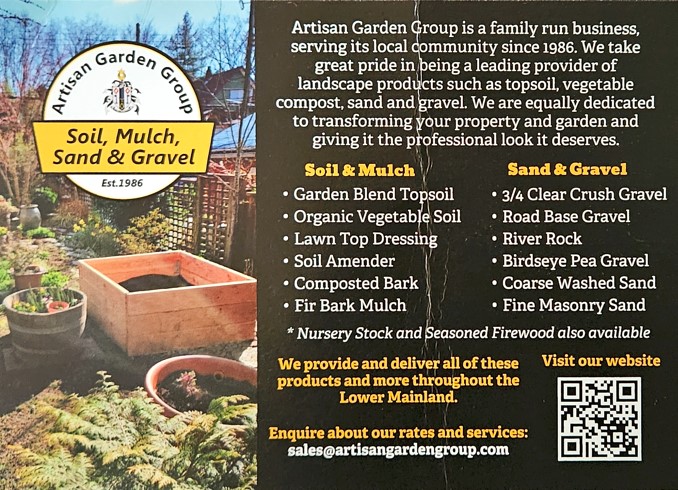 |
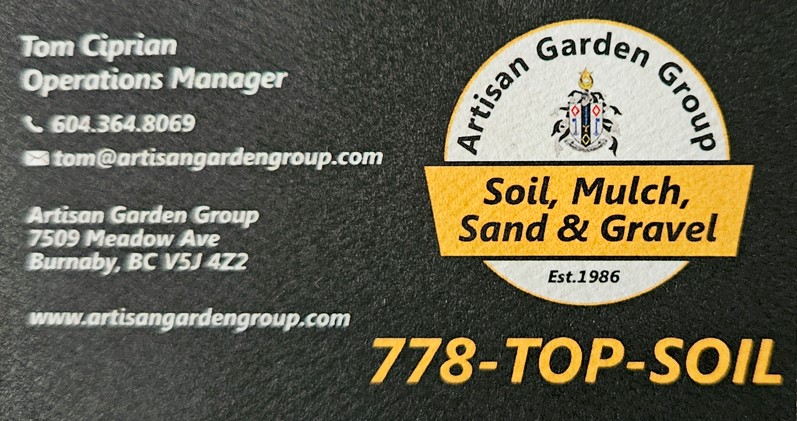
RELATED LINKS
The Artisan Group
https://artisangardengroup.com/
It’s About Thyme nursery
https://itsaboutthyme.ca/
Homestead and Chill: Pros and Cons about 8 types of mulch
https://homesteadandchill.com/garden-mulch-types-pros-cons/
Seeds and Spades: Compost Mulch – pros and cons
https://www.seedsandspades.com/compost-mulch/
Gardening Etc: Compost vs Mulch
https://www.gardeningetc.com/advice/compost-vs-mulch
Gardening Channel: Compost vs Mulch
https://www.gardeningchannel.com/compost-vs-mulch-explanation/
******************************************************************
~ Bonus Feature~
BIRDS IN MY GARDEN By Les Bramley
At the end of April last year we had two Eurasion collared doves show up with our annual flock of band-tailed pigeons, the doves were here for two days. This year the doves hung around for three weeks before heading off to wherever. I was not familiar with these birds, it turns out that they are another invasive species and are found all over British Columbia now. They are originally from Asia, but I did not find a clear account explaining how they arrived here. The band-tailed pigeons have been visiting our house for the last 42 years that we have lived here, as many as four tee at once some years. For this I am glad as the birds were almost hunted to extinction. The USA has put them on the protected bird list to save them.
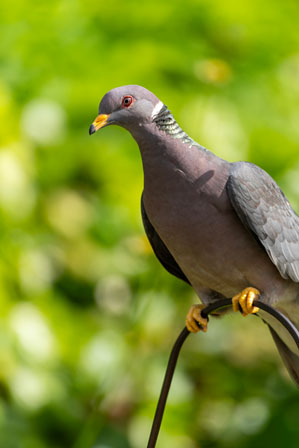 |
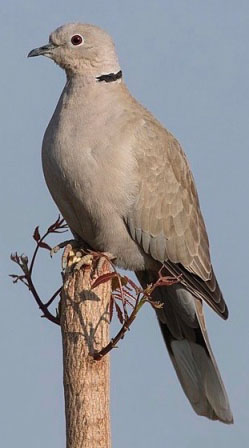 |
Photo (left) Band-tailed pigeon by our talented local photographer, MrGPhotography
Photo (right) Eurasian Collared DoveWikipedia